How to add Miracast Receiving Support (Wireless Display) to Windows 10 and install the Connect app
Starting in Windows 10 version 2004, Microsoft has made the built-connect app optional. If you need to use it to transfer your phone's screen contents to your computer's display without wires, you need to install and enable the app.
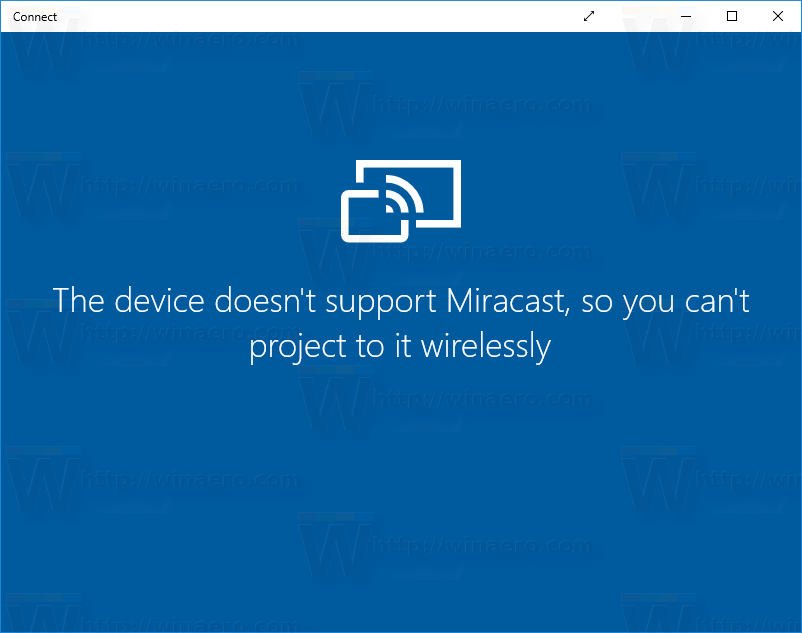
Windows 10 Connect app is one of the built-in Windows 10 apps. It had a streaming feature that required a Continuum-enabled Windows 10 phone to get it working. It also allows other Miracast-enabled PCs to project to other PCs without needing a dock or Miracast adapter.
Advertisеment
Miracast is a standard for wireless connections from sending devices (such as laptops, tablets, or smartphones) to display receivers (such as TVs, monitors, or projectors), introduced in 2012 by the Wi-Fi Alliance. It works like "HDMI over Wi-Fi", and can be considered as an alternative connection to the cable from the device to the display.
Windows supports Miracast starting in Windows 8.1. The Connect app in Windows 10 turns the computer into a Miracast receiver, so you can cast another device's screen to it directly bypassing your router or home wireless network. No special hardware is required as it uses Wi-Fi Direct.
The updated list of the removed and deprecated features in Windows 10 version 2004 now comes with the following note. The Connect app for wireless projection using Miracast is no longer installed by default, but is available as an optional feature. So, you need to install the app to make your PC work as a wireless display.
To Add Miracast Wireless Display to Windows 10 and Install Connect App,
- Open the Settings app.
- Go to Apps > Apps & features.
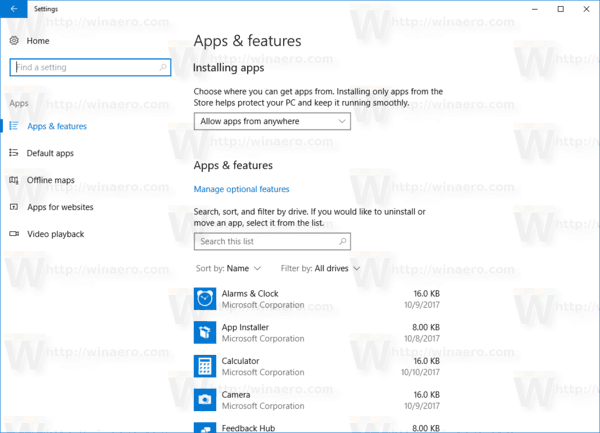
- On the right, click on the link Optional features.
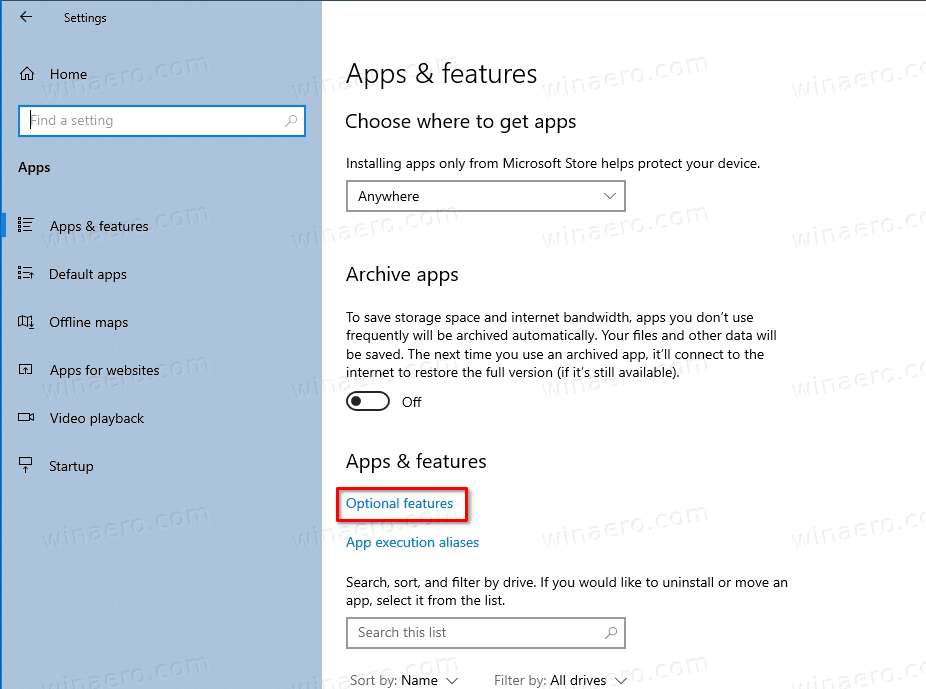
- Click on the button Add a feature at the top of the next page.
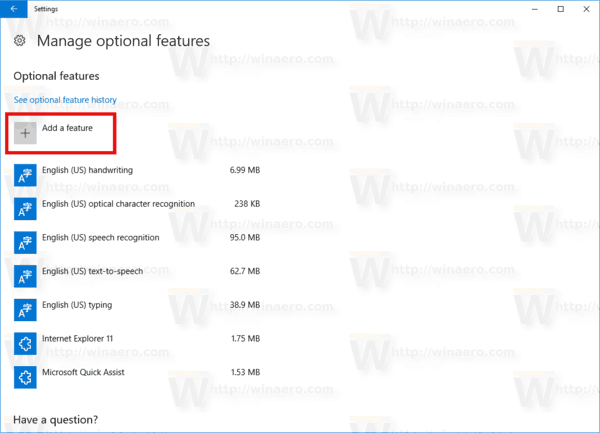
- Find the "Wireless Display" optional feature you need to install in the list under Add a feature.
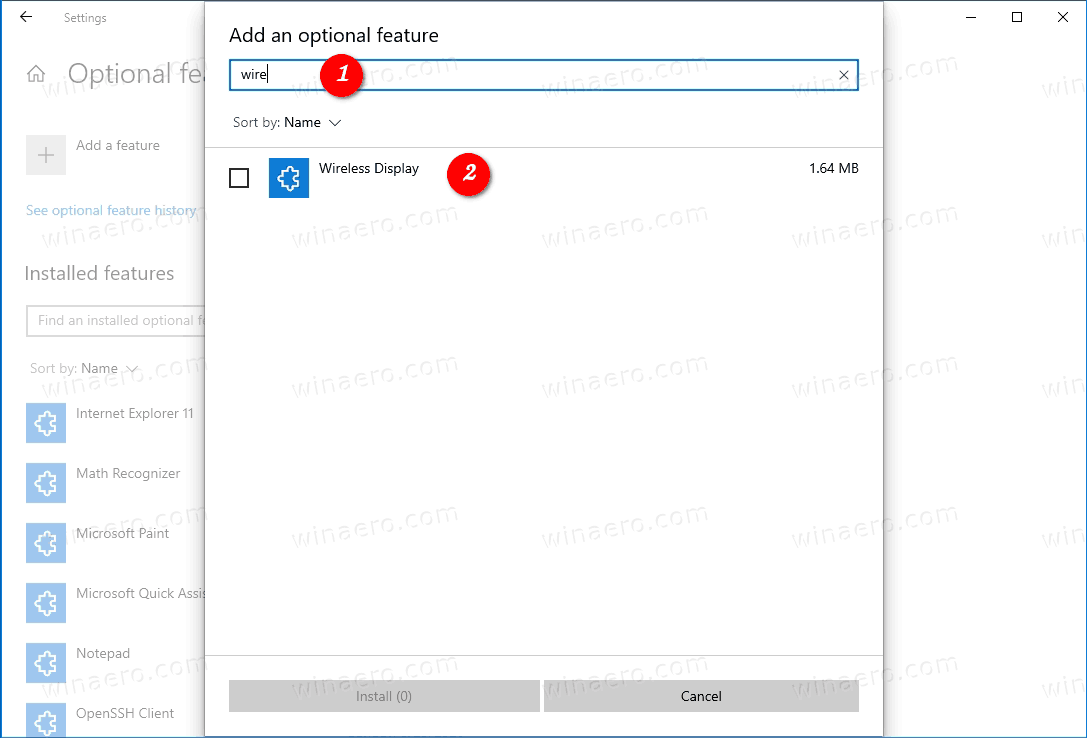
- Select it and click on the Install button.
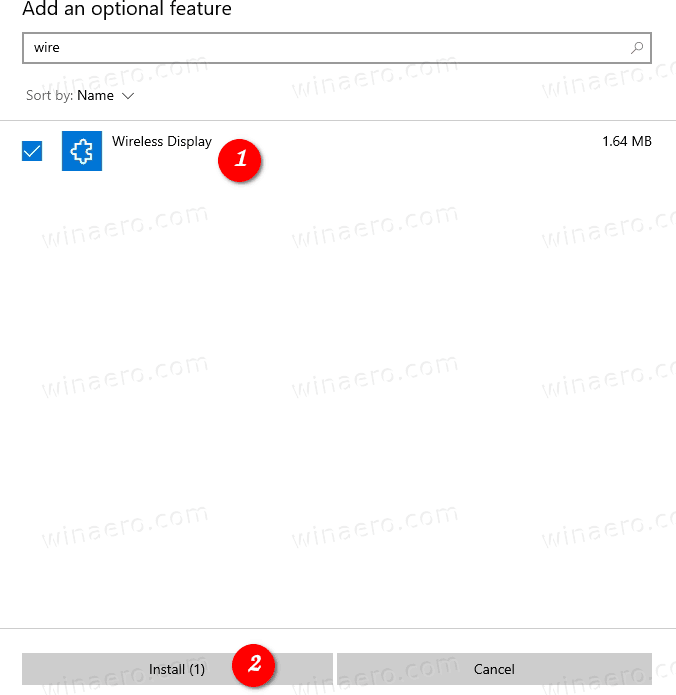
You are done. The feature will be instantly installed.
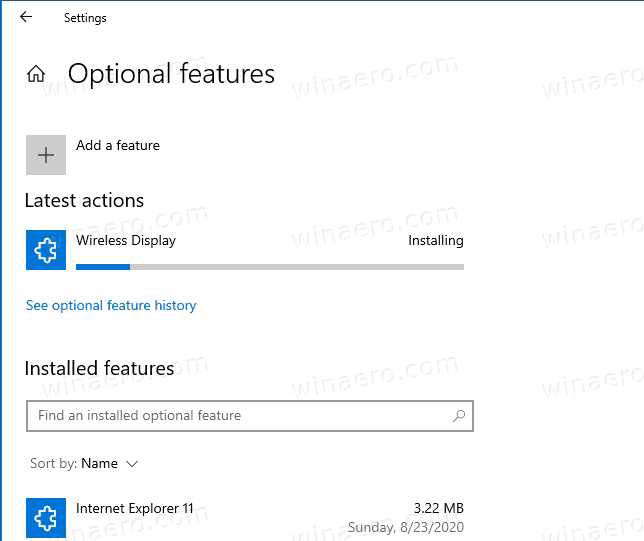
This will also restore the Connect app shortcut in the Start menu.
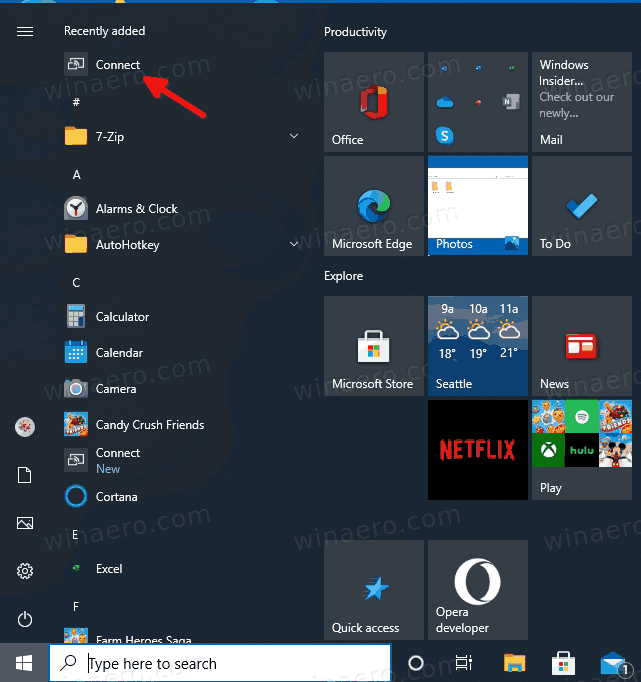
Later, you can easily remove the installed Wireless Display feature along with the Connect app. Here's how.
To Remove Miracast Wireless Display from Windows 10 and Remove the Connect App,
- Open the Settings app.
- Go to Apps > Apps & features.

- On the right, click on the link Optional features.

- Find the Wireless Display entry in the list of the installed optional features and select it.
- Click on the Uninstall button.
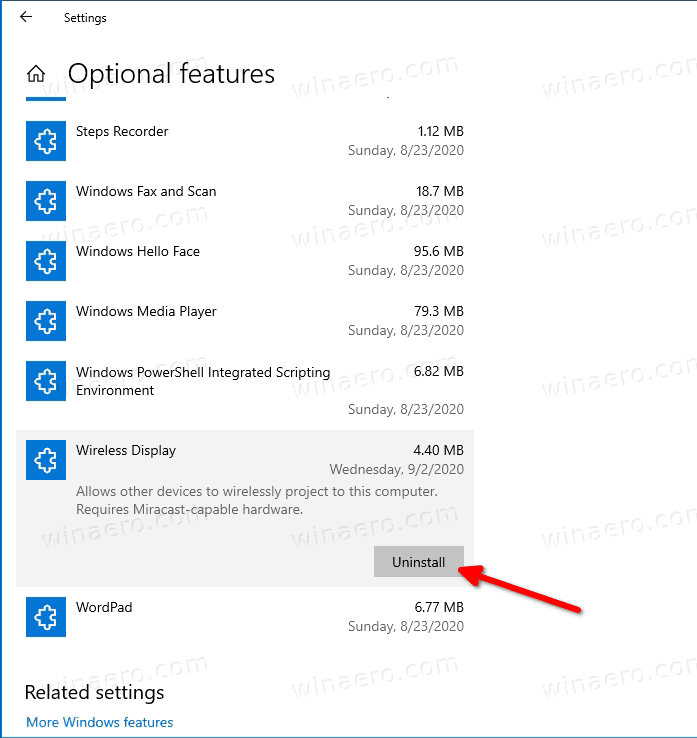
- The feature will be instantly removed.
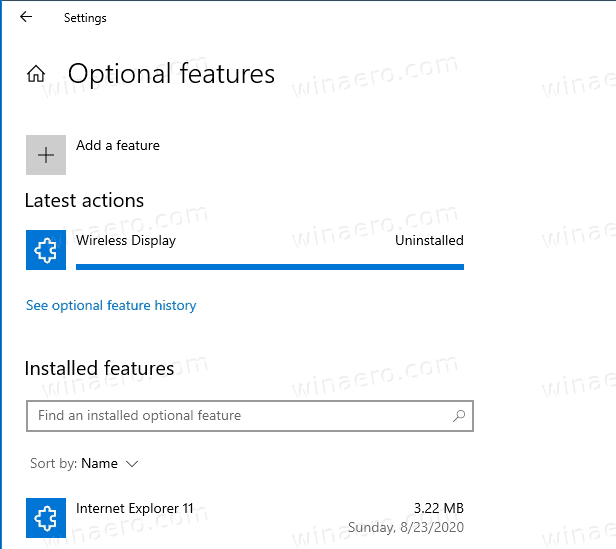
That's it!
Support us
Winaero greatly relies on your support. You can help the site keep bringing you interesting and useful content and software by using these options:

This optional feature doesn’t seem to be available on the “N” edition of Windows 10 Pro, which I made the mistake of installing on my main PC.
Follow-up: I went ahead and installed regular win10pro (non-N) on my PC. Now I’m able to find and install the “Wireless Display” optional feature. Still, I can’t get my PC to act as a Miracast receiver, even though running “netsh wlan show drivers” gives me “Wireless Display Supported: Yes (Graphics Driver: Yes, Wi-Fi Driver: Yes)”.
The Connect app says “The device doesn’t support Miracast, so you can’t project to it wirelessly”.
Going into “Settings -> System -> Projecting to this PC” says “This device doesn’t support receiving Miracast, so you can’t project to it wirelessly”.
For what it’s worth, here’s my specs:
– CPU: Intel Core i7-4600M
– WLAN: Intel Centrino Advanced N 6235 (dual-band adapter)
– GPU 1: Intel HD 4600
– GPU 2: Nvidia Quadro K610M
AFAIK, this configuration should have no problem sending and receiving Miracast.
Any input is appreciated.
OK I’m at a loss here. Suddenly I can cast my phone’s display to my PC.
It seems Windows disables Miracast support when my PC is hooked to a secondary monitor, which is driven by the Quadro GPU, instead of the Intel one. It would be nice to get a descriptive error message instead of guessing.
Anyway. Thanks for sharing this resource. Much appreciated!
When I click on the Add feature, I can’t find the Wireless Display download option. Where can I download it
@Newaz Sharif
Make sure you’re running Win10 2004. Also, this isn’t available on the N editions of Win10.